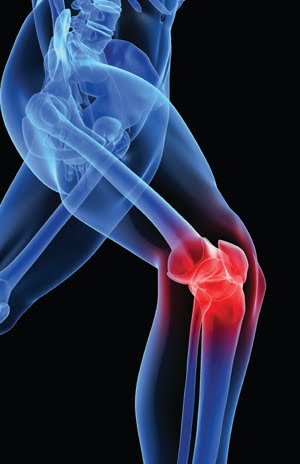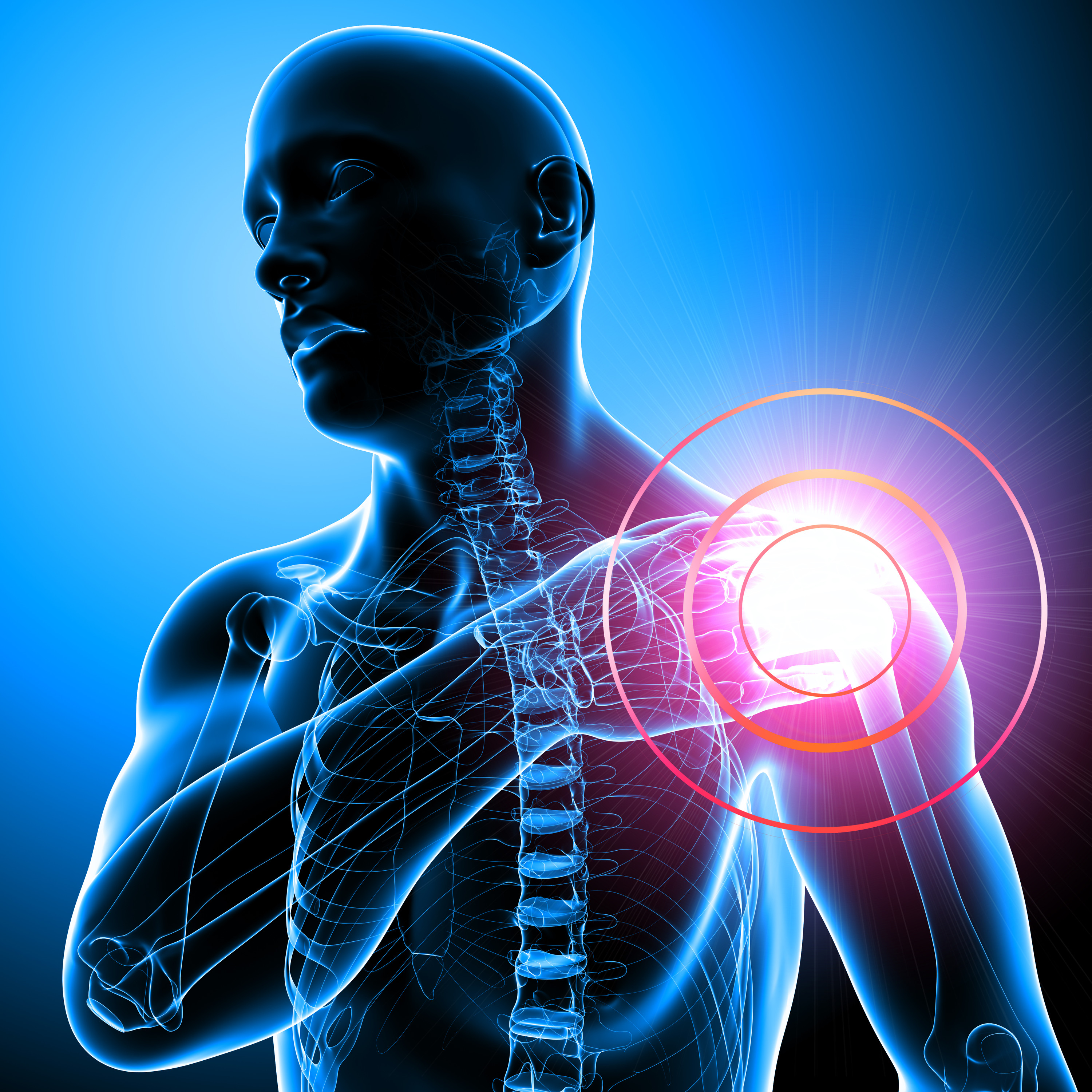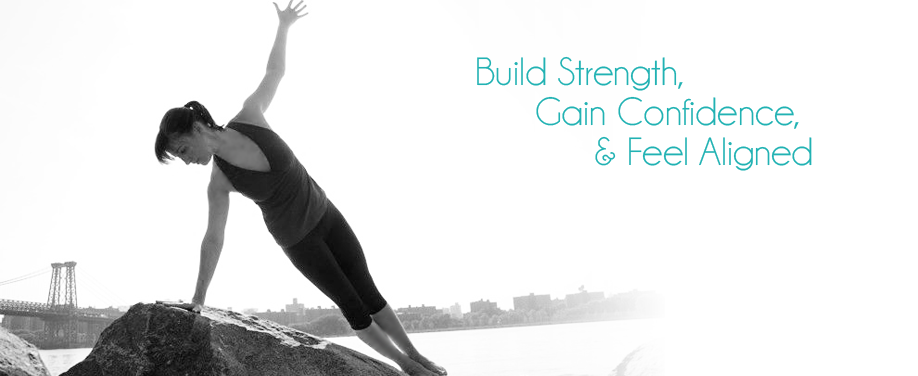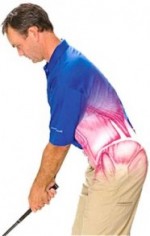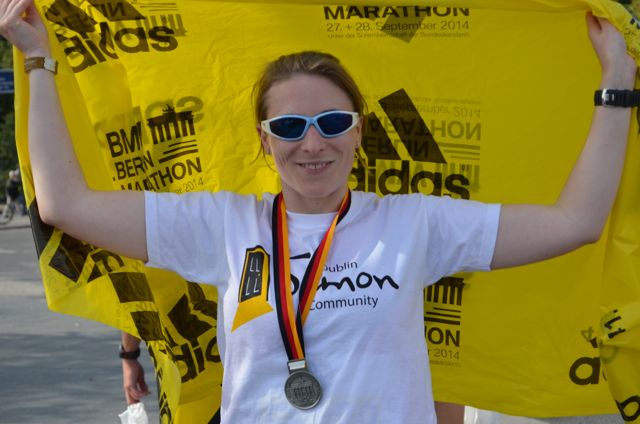Range of Motion February Newsletter
|
|||||||||||||||||||||||||
|
|||||||||||||||||||||||||
|
Refer a Friend in February
Refer a Friend Month @ Range of Motion Physical Therapy
|
|||||||||||||||
|
|||||||||||||||
|
|||||||||||||||
|
Knee Pain and Knee Injuries
Over the years I have written a number of blogs on knee pain and knee injuries, highlighting how and why they occur e.g. Runners Knee. In this blog I would like to focus on two areas of the body that can cause knee pain and knee injuries if not maintained well, in terms of strength and flexibility.
If you are suffering from knee pain one of the first areas you want to look at is the Quad muscles. If the Quad muscles are not functioning correctly due to weakness or tightness they can cause the knee cap to track incorrectly, thus causing knee pain and knee injuries.
The first and easiest form of treatment if you feel your Quad muscles are tight is to Form Roll your Quads. I have written in the past of the importance to Foam Roll your body regularly and I have a video in the link on how to Foam Roll your lower body.
The second way to ensure your Quads are functioning correctly is to ensure they are strong enough and the 3 Quads muscles are working in synergy with each other. If one of the Quad muscles is weaker or not firing the way it should be, then this can also cause the knee cap to track incorrectly. Below is a video on a number of Quad exercises you can do at home to help ensure you are keeping the Quad muscle strong.
http://youtu.be/DXQLlA-RMW4
The second area to address is the glute muscles, the main reason we want to look at the Glute muscles is to ensure the stability of the hip as we walk and run. Again any weakness in the Glute muscles can lead to a Valgus strain on the knee, which over time can cause knee pain and knee injuries. I have written about the importance of the Glute muscles in previous blogs. I have attached a quick video of some great Glute activation exercises that are good to help maintain Glute strength and can be used to help activate the glutes before you head out for a walk or run.
http://youtu.be/TwpCkM8txew
The final area to look at if you are suffering from any knee pain and knee injuries is the foot and ankle. This is to ensure you have the stability and mobility within the foot and ankle to ensure the foot is not pronating as you walk or run. Check out a previous blog on Ankle Stability to learn more on this topic.
Low Back Pain
Earlier in the month I was contacted by a client who had right sided low back pain, with pain travelling down her leg. The clients elderly mother had spent the Christmas period with her and her mother needed assistance when walking.
My client spent the Christmas period with her mother leaning on her right side as they walked every day. The client had a history of low back pain that would flare up from time to time, this low back issue was further aggravated by the additional pressure put on her right side. On examination the client had a very weak lower back and very little core strength.
After 2 treatment sessions the client symptoms fully subsided but I insisted she look at improving her core and low back strength. I spent a few sessions teaching her how to activate her pelvic floor while maintaining a neutral pelvis, we progressed further with with basics Pilates exercises.
Below is a short video of basic Pilates exercises to assisted with Low Back Pain and strengthening the low back.
Please share this video with anyone you feel would benefit from trying the exercises or alternatively attend one of our Pilates classes.
http://youtu.be/wgY8asvnjWo
Low Back Pain Pilates Lucan
Are you suffering from low back pain? do you have a weak back or ongoing low back pain that can flare up regularly. Low Back Pain Pilates Lucan can help with the Pilates video below.
The video is designed to help with Low Back Pain, the Pilates exercises are designed to strengthening the muscles of the pelvic floor and lower back, while also helping increase mobility and flexibility, and reduce Low Back Pain.
If you are suffering from an acute episode of low back pain, you are also experiencing a lot of low back stiffness, doing the Low Back Pain Pilates Lucan exercises regularly will slowly help to ease out the stiffness in the lower back. The Low Back Pain Pilates Lucan can also help reduce the pain. When doing the exercises stay within your pain range, you should not irritate your symptoms any further.
If you are just trying to keep your back healthy do the Low Back Pain Pilates Lucan exercises once or twice a day, again do not cause yourself any pain and build on the reps per exercise.
If your symptoms persist, or become more severe stop these exercises and seek assistance from a qualified therapist. If you would like to learn more about our Pilates Lucan classes why not come along to one of our 6 week courses or drop in for a trial class.
http://youtu.be/wgY8asvnjWo
Shoulder Pain Exercises
I have written quite a few blogs on Shoulder Pain, Rotator Cuff Issues and general Chronic Shoulder pain, with that in mind I did a couple of simple videos for some of the exercises I have discussed in these blogs.
The first exercise is for early stage rotator cuff rehab and involves Internal and External Rotation exercises, this exercise strengthens the muscles of the rotator cuff tht both internally and externally rotate the shoulder joint.
http://youtu.be/9Gs4I3xijZg
The Cheerleader Exercise is an easy way to do the YTW exercise, at home using a theraband. The Cheerleader exercise helps to strengthen the trapezius muscles while also helping to create a stronger subscapular muscle. A strong subscapular muscle is required to assist with Internal rotation while also helping to stablise the scapula during shoulder movements
http://youtu.be/ia2m2NxLOVE
If you are suffering from any shoulder pain please contact us for an assessment and tailored treatment and rehab plan.
Maintain your body with Pilates Classes Lucan
One of the main benefits of Range of Motion Physical Therapy Pilates Classes Lucan, is how you can maintain your body in good working while also helping reduce stress and tone the body.
1. De stress
Pilates classes Lucan are a great way to help you de stress after a long day, Pilates classes start off with some relaxation stretching, breathing and allowing you tune into the class. Learning relaxation strategies and diaphragmatic breathing, can help you when things get on top of you, teaching you how to relax your posture and control posture aches and pains.
2. Pilates is a full body workout
Pilates exercises are carried out on floor mats, the exercises recruit all major muscles groups, while constantly focusing on pelvic floor core muscles. Pilates exercises develop strength and flexibility throughout the whole body. Only yesterday one of the clients commented how her stomach muscle have started to tone up after only 4 classes, so much so her husband commented on them.
3. Focused Classes
The Pilates Classes Lucan offer a dynamic flow of body weight exercises in a comfortable environment that enables you to learn at your own pace, there is no pressure from screaming personal trainers. We will challenge you to stretch your body and encourage your body to adapt and change to the challenges of the exercises. 6 week class programs are planned out to build strength and tone your body from one week to next. Clients can see how their ability to perform the more challenging exercises grows throughout the course of the weeks and months, building confidence and strength.
4. Classes for everyone
Classes are targeted at both complete beginners looking to get stronger and intermediate level classes for those who have done pilates before and want to stay strong and injury free. The classes can help those of you active in sports and looking to cross trainer to help develop strength and prevent injury.
Pilates Classes Lucan are kept to a 1 hour slot which makes them an efficient way to train, and by booking one of our 6 weeks courses means you have committed to making a change to your body and maintaining it in good working order with Pilates.
5. No more poor posture
Pilates exercises will help develop strength and correct posture in the key areas of the body, focusing on pelvic floor/lower back, hips, upper back and neck. Pilates will counteract bad postural habits that develop from having to work at desks all day and aches and pains associated with poor posture and slouching.
6. And finally a pain free back...
Pilates was developed by Joseph Pilates in 1883 as rehabilitative tool. Pilates has since been scientifically proven to help strengthen the deep intrinsic muscles of the core and strengthening our lower back and alignment of the spine, while also reducing the stress on the lower back.
To book a course of Pilates Classes Lucan please contact us.
Improving your Golf Game with Pilates Exercises
Over the past month I have been working with a client who has been having difficulty with his golf game, but as it turned out I have helped him get his independence back, while also improving his golf game with Pilates exercises.
To me it was not his golf game that was his problem, it was more his inability to walk without having to hold on to his wife or using a stick for support. On examination, he had difficulty recruiting his core muscles, coupled with weak hip muscles, meaning he could not walk with stability. And of course these issue were also impacting his golf game.
The client had two hip replacements (11yrs / 3yrs ago), he had limited rehabilitation following the surgery. During his assessment I watched how he walked, he was not flexing through his ankles and was walking flat footed. When I asked why he walks like this, he explained that, before his last hip operation it use to hurt him when he heel strikes. Even though he has not had hip pain in 3 yrs his body was still walking this way.
The body is amazing at compensating to avoid pain, which leads to specific movement patterns developing, hence this why you need to rehab after every injury to undo the compensation pattern.
In addition, the fact he had very little glute or core strength, meant he could not balance on one leg and would lose balance when changing direction.
As part of his first session, I worked with him on how to walk properly, taking him through the gait cycle, ensuring he started to flex through his ankle and start to heel strike more. I also taught him how to engage his pelvic floor muscles, enabling him to walk with more stability.
On his return visit, the transformation was very apparent, he was walking with more heel strike and confidence, he had learnt how to engage his pelvic floor muscles and had built up some good endurance in the short space of time, he was also turning without stumbling.
Over the course of the next 3 weeks we worked on a number of Pilates style exercises, teaching him how to disassociate his upper body from his lower body, giving him more mobility through his hips while also strengthening his glutes and core.
On his most recent visit he reported that he can now drive the ball 125yrds, 25yrds further than he was able to do before starting to work with me. And more importantly for me, he says he is gaining more independence and confidence in how he walks, he does not need to hold his wife for support and I have also been able to improve his golf game...
This client is 68yrs old and has told me I have given him back his independence, and with a lot of work from him we have improved his golf game. This is why I love my job and being a Physical Therapist.
Training on Empty for your Long Runs
Some of you maybe aware that my girlfriend Ciara completed her first marathon in Berlin in September, she did a fantastic time of 3:53 and managed to run a negative split of nearly 2 minutes. She crossed the line smiling and felt she could have kept going and feels training on empty helped her a lot. I did not specifically coach Ciara as she is member of Lucan Harriers and they have a great woman's coach.
I did help Ciara with a couple of elements of her training plan, I gave her some advice such as to only run 3 times a week, i.e. 2 club sessions and her long run at the weekend. I encouraged her to cross train for a couple of session a week, so she did boxercise and attended my pilates class on a weekly basis.
One area I did advise her on was her nutrition, I had done some research on training on empty and glycogen depletion. Studies show that a small amount (about 20%) of your body's glycogen (energy) is stored in your liver while a majority (about 80%) of your body's glycogen stores are inter-muscular. The amount of glycogen stored in your liver is highly variable throughout the day depending on activity levels, when and what you last ate, and time of day. If you wake up and go for a run without eating it is safe to assume that your liver glycogen stores are very depleted. However, inter-muscular glycogen stores are far less variable and far more plentiful than liver glycogen stores and will be your body's primary source of fuel for those early morning runs. On inter-muscular glycogen alone you can sustain hours (2+) of intense activity such as running before they are completely depleted.
In addition, a 2011 study by Karen Van Proeyen et al. investigated the effects of training in a glycogen depleted and glycogen-replenished state using twenty young male cyclists. The men were split into two groups, both of which had equivalent diets and training regimens. The first group did all of their training after an overnight fast, while the second group took a carbohydrate-rich breakfast about 90min before their daily training session (a 60-90min bike ride at a fairly hard pace in the morning). After six weeks of training, both groups had improved a similar amount on a 60-minute time trial. However, there were several changes in the “fasted” group that indicated that their bodies had adapted to more efficiently burn fat as fuel.
- First, levels of enzymes associated with fat metabolism increased significantly in the group which trained after the overnight fast, but not in the group which had a large breakfast before training.
- Additionally, their fat utilization increased throughout a range of intensities. That is, they could maintain a given pace with less reliance on glycogen, enabling them to last longer in a race without hitting the wall.
Based on the above theory and study, I suggested to Ciara that she start doing her long runs on an empty stomach. I did not just have her start off running for 2 hours without eating. Ciara started to train on an empty stomach about 3 months before her marathon, we gradually increased the amount of time she would run for without eating. Most of you probably do something similar but the objective was to train her body to learn to burn fat as the primary source of energy, and then have some carbs while out on her run, thus replenishing her glycogen levels so she does not bonk but can be more efficient with her energy reserves.
Ciara experimented with different bars and gels, and choose powerbar jellys as her carb of choice, she started running for an hour before eating some jellys on her run. As her runs got longer so did the period of running on empty, over the course of her marathon training Ciara worked up to nearly 3hrs of running on an empty stomach and then had a jelly every 20min for the remainder of her run. When she returned from her run she would then have a recovery shake.
While this was not a very scientific experiment, Ciara does feel it enabled her to run longer without pre loading carbs the day of the marathon, she did not have to worry about nutrition for the marathon. On the day of the marathon she was aiming for 4hrs and started with the 4hr pacer, she ran for about 3hrs before starting to eat the jellys, she finished in 3:53 without bonking or hitting a wall, and ran a negative split of nearly 2 mins. While nutrition may not have been the only cause for a great first marathon, Ciara does feel that running on empty for her long sessions helped her run without bonking, stomach problems or worrying about nutrition on the day.
I also read that training on empty is really only applicable for endurance training and not your average 10km race, if for example you were planning on doing an ultra marathon you should be able to train your body to last up to 4 hrs or so on your fat reserves. Then if you want to kick on towards the end of a race, you have some carbs to give you an energy kick for the fast finish you want. If you would like to discuss this or other topics please contact me at Range of Motion Physical Therapy, Lucan, Co Dublin
Lucan Pilates Classes Crawling
Crawling as a Pilates exercise and movement pattern, I have introduced crawling into my Lucan Pilates classes as a warm up exercise.
Crawling is the first complex movement pattern that we learn as children. Crawling as an infant is very important to create strong shoulder and hip joints, co-ordination and core strength preparing us for walking.
Crawling teaches us functional core strength and movement. When crawling we are using our core muscles to stabilise our spine, hold our bodies in the air while also moving all our limbs. This is the way the core works naturally when running and swimming, which is in direct contrast to static exercises such as crunches and sit ups,
Types of crawls
There are various types of crawling and many newly named crawling patterns in primal movement circles, below are few:
Standard crawl
A typical crawl is left-hand, right-knee, right-hand, left-knee, or a hand, the diagonal knee, the other hand then its diagonal knee. This is the first gait most humans learn, and is mainly used during early childhood, or when looking for something on the floor or under low relief. This is the most natural of the crawls and is the one that requires the least effort.
Bear crawl: http://bcove.me/qy2l9ke2
The bear crawl is almost identical to the standard crawl, but the feet are used instead of the knees, which creates an arched or squatted body posture. This works as a faster crawl but requires more effort to maintain.
Crab crawl
The crab crawl is an upside down bear crawl. This is the most unnatural of the crawls, requiring the most effort, and is used in crab soccer. The crab crawl starts by sitting down with the feet and hands flat on the ground, the hips are then raised off the ground and the chest faces the sky.
Leopard crawl/High crawl
The leopard crawl is a military-specific crawl. This is a two-beat gait like a trot: an arm/elbow is advanced with the diagonal knee. This is designed for the smallest silhouette possible, and the body is often nearly or actually touching the ground, and although the elbow and knee are the main focus, most of the respective limbs touch the ground.
Tiger crawl
The tiger crawl is essentially a highly accelerated combination between crawl and leopard crawl. It uses the hands and the knees/feet depending upon the situation, while maintaining a silhouette almost as small as that of the leopard crawl. This is relatively fast gait but can take large amounts of energy.
Some of the benefits of crawling exercises:
- Strengthen hip & shoulder joints
- Unloads the spine
- Rich tactile, visual, & sensory input
- Fires almost every muscle in the body
- Stimulates both sides of the brain (co ordination)
- Works on reciprocal movement patterns
- Improves ability to dynamically control core muslces
- Takes advantage of primal movement system (“hard wired” in CNS)
Crawling is being used more and more as an exercise technique to help improve core strength, joint stability and co ordination among adults. Try it next time you are in the gym or working out in the local park, I use Spiderman Crawling as a warm up when training. http://youtu.be/_K7rv_vFOWM








